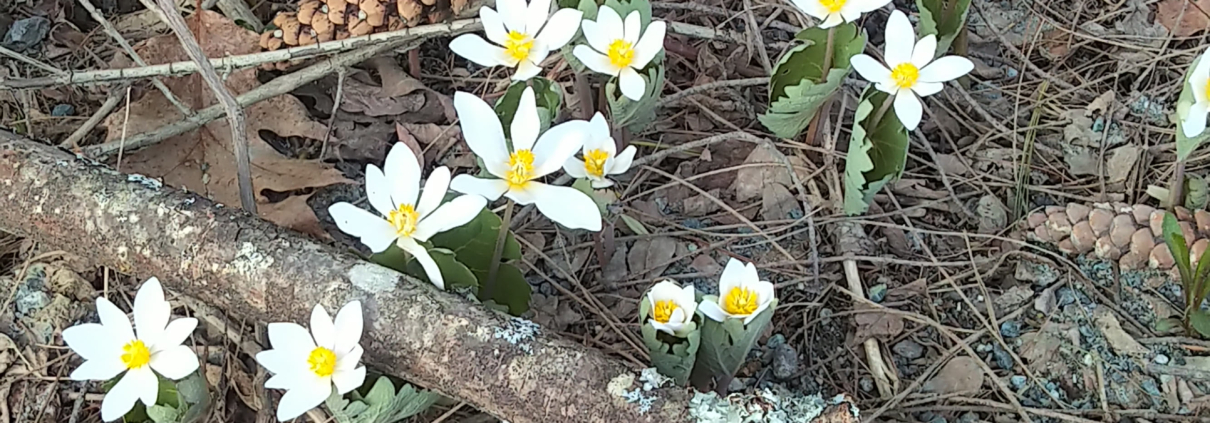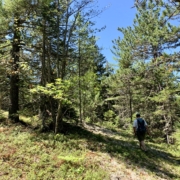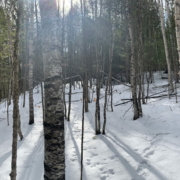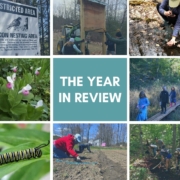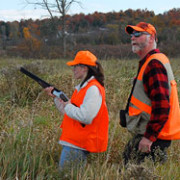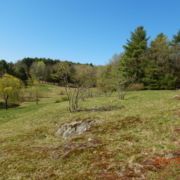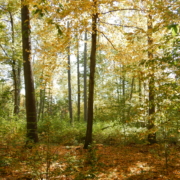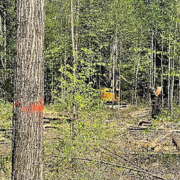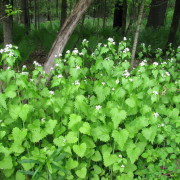Your Spring Wildflower Identification Guide
In Vermont and New Hampshire, the first spring wildflowers are known as “spring ephemerals”. They are here today and gone tomorrow! Spring wildflowers are with us for only a short time in the very beginning of spring and because of their short life span and early blooming they are a lot of fun to look for in the woods. Once you know how to recognize these six wildflowers you will see them everywhere! This guide will cover where to look for and how to identify some common VT and NH ephemeral wildflowers.
Wildflower photos by Jason Berard (spring beauties, hepatica, bloodroot, early blue cohosh) and Alison Marchione (Trillium, Coltsfoot, patch of Bloodroot at top)
1. Spring Beauties (Claytonia virginica)
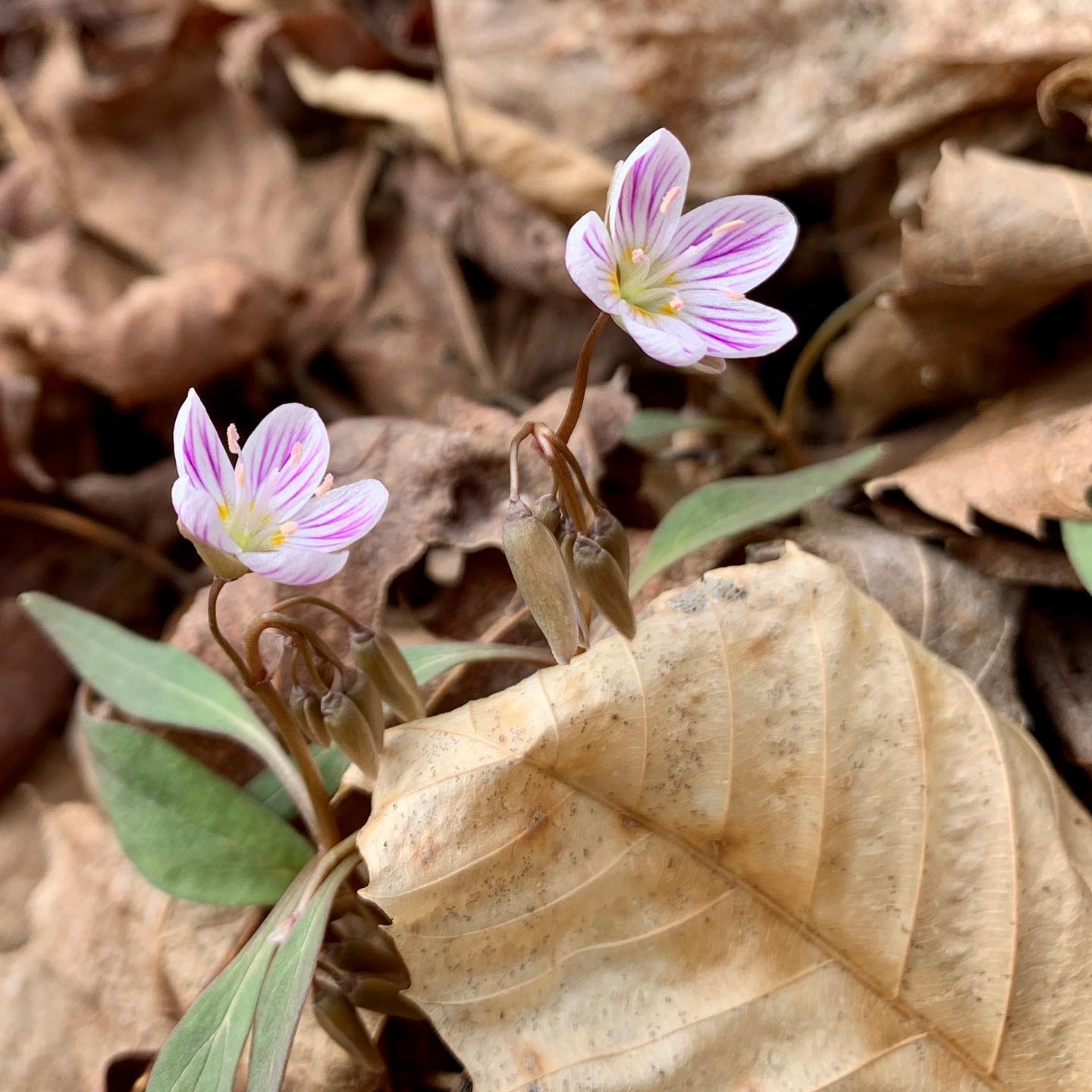 Spring beauties are often found in wooded uplands and near rocky outcroppings, but can also be found in lawns and on roadsides. The spring beauty is identified as a 3 – 6 inch tall plant with a light green stem. Each flower on the spring beauty is 1/3″ wide and has 5 petals and two green sepals. The petals of the flowers are white with fine pink stripes. The stripes can range from very pale (almost non-existent) to bright pink. Flowers open in warm sun and close on colder days.
Spring beauties are often found in wooded uplands and near rocky outcroppings, but can also be found in lawns and on roadsides. The spring beauty is identified as a 3 – 6 inch tall plant with a light green stem. Each flower on the spring beauty is 1/3″ wide and has 5 petals and two green sepals. The petals of the flowers are white with fine pink stripes. The stripes can range from very pale (almost non-existent) to bright pink. Flowers open in warm sun and close on colder days.
Spring beautifies were used by Iroquois people for medicine, and Algonquin people would cook the tuberous roots like potatoes.
2. Coltsfoot (Tussilago farfara)
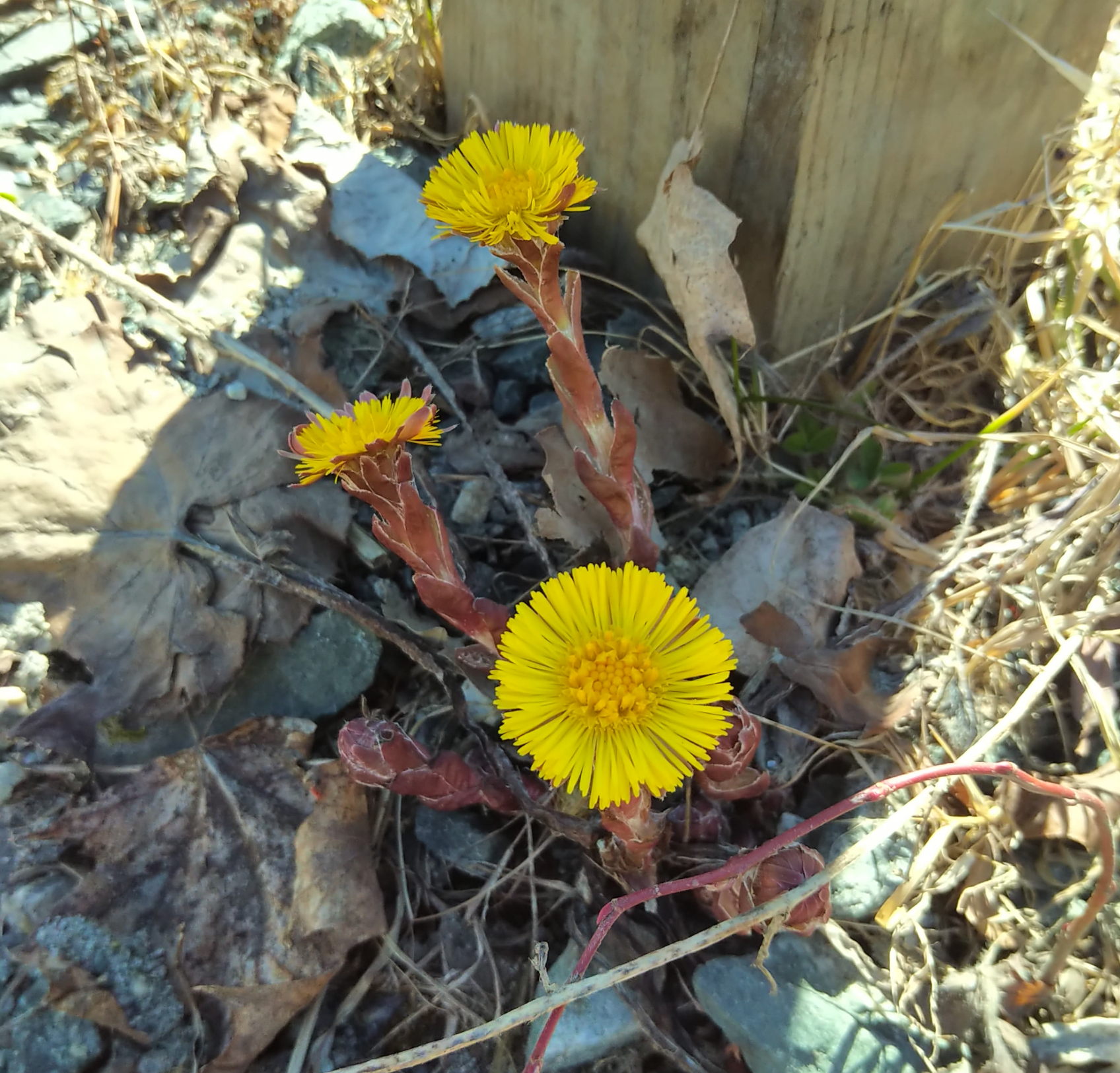 At first glance coltsfoot looks like it might be an early dandelion but there are several distinctions. Coltsfoot is often the first spring wildflower to appear in our region, much earlier than the first dandelion. The flower heads are usually smaller and more compact, and the stems are segmented an often a grey to reddish color, unlike the smooth pale green of a dandelion. Coltsfoot are a part of the Asteraceae family of plants (as is the dandelion). Where there is one coltsfoot there are often many, as the plant multiplies through its rhizomes, forming colonies. Coltsfoot is often found in disturbed places like along roadsides and trail edges.
At first glance coltsfoot looks like it might be an early dandelion but there are several distinctions. Coltsfoot is often the first spring wildflower to appear in our region, much earlier than the first dandelion. The flower heads are usually smaller and more compact, and the stems are segmented an often a grey to reddish color, unlike the smooth pale green of a dandelion. Coltsfoot are a part of the Asteraceae family of plants (as is the dandelion). Where there is one coltsfoot there are often many, as the plant multiplies through its rhizomes, forming colonies. Coltsfoot is often found in disturbed places like along roadsides and trail edges.
Coltsfoot is considered invasive in some New England states. It is native to Europe.
3. Round-Lobed and Sharp-Lobed Hepatica (Anenome americana & Anenome acutiloba)
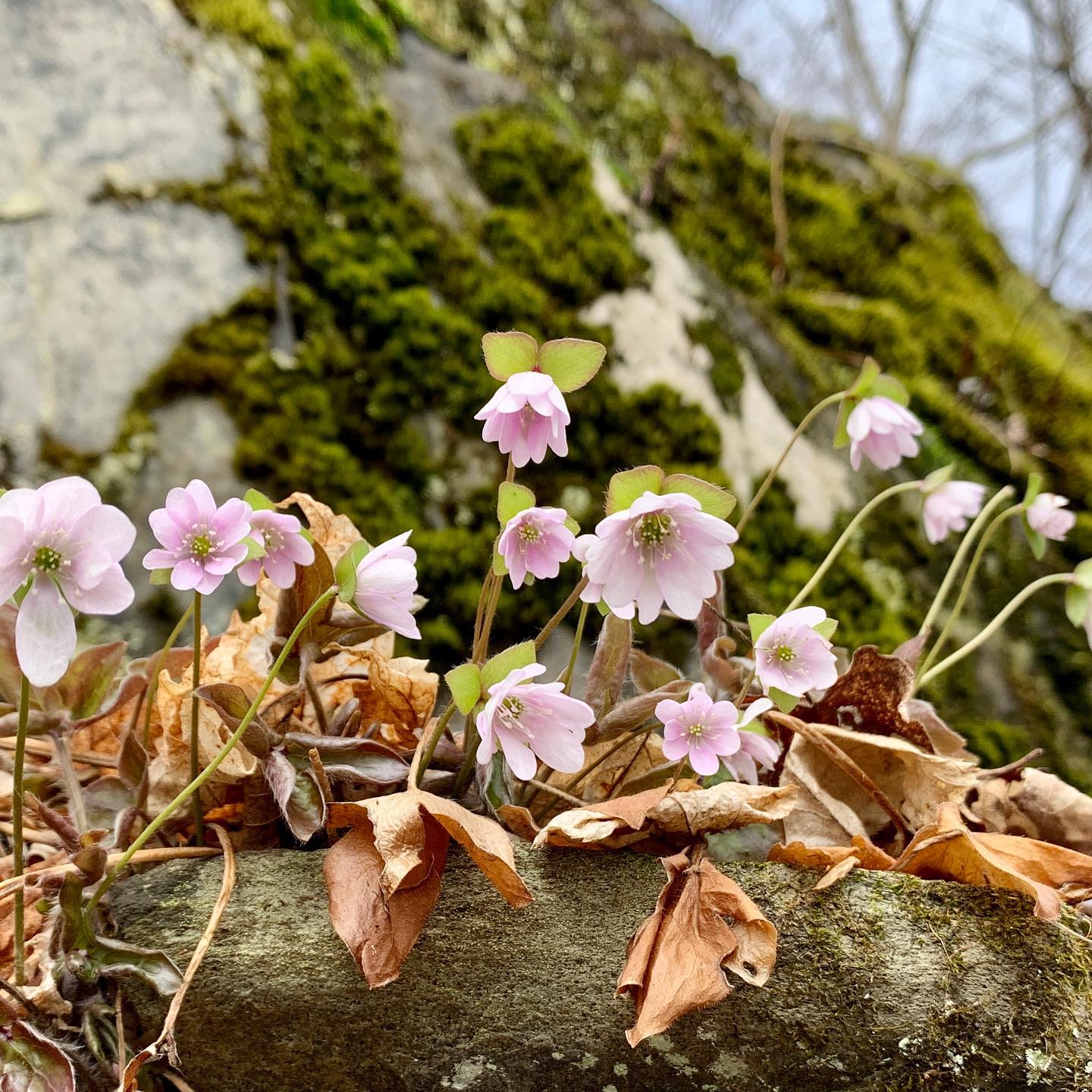
Hepatica is a member of the buttercup (Ranunculacae) family. It is often found in wooded upland areas that are well drained with some rocky material. Both types of hepatica are 3-6″ tall perennial plants that consist of a tuft of basal (bottom of the stem) leaves. Each leaf is on its own long, thin stem and the leaves are three lobed and can range in color from green in the summer to brownish red in the winter. Each flower occurs on the top of a stalk and is 1 inch across with 5 -11 petals. The flowers range in color from white to pink to pale blue. To tell round-lobed and sharp lobed hepatic apart you need to look at the shape of the leaves – some have rounded leaves while other have sharp, pointed leaves.
The Greek word “hepatica” means “liver”. The hepatica plant is named after the liver because the shape of the leaves and their maroon color.
4. Trillium
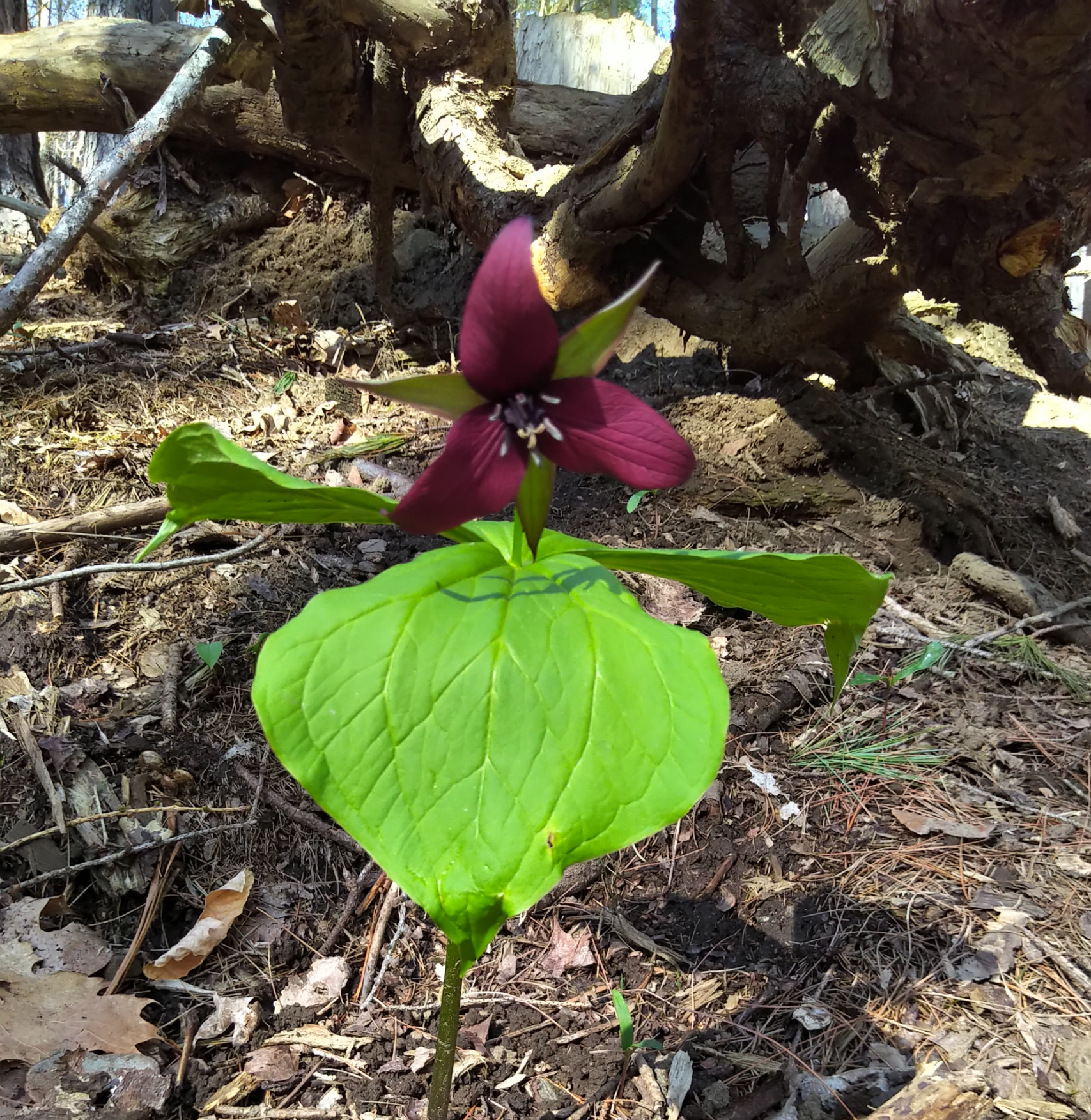 Trillium is a genus of about fifty flowering plant species within the family Melanthiasceae. A common trillium around the Upper Valley is red trillium (trillium erectum L.). Trilliums are found in rich, moist woodlands. They can also occur is drier habitats and acidic soils. Flowers are seen late April until June. Trilliums generally have white, pink, or rose colored flowers that are about 2.5 inches wide. Each plant has three scale like leaf structures (called cataphylls, they are not true leaves) and the flowers have three petals. Trilliums have a unique look to them and once you know what they look like they are easy to spot in the spring woods.
Trillium is a genus of about fifty flowering plant species within the family Melanthiasceae. A common trillium around the Upper Valley is red trillium (trillium erectum L.). Trilliums are found in rich, moist woodlands. They can also occur is drier habitats and acidic soils. Flowers are seen late April until June. Trilliums generally have white, pink, or rose colored flowers that are about 2.5 inches wide. Each plant has three scale like leaf structures (called cataphylls, they are not true leaves) and the flowers have three petals. Trilliums have a unique look to them and once you know what they look like they are easy to spot in the spring woods.
5. Bloodroot (Sanguinaria canadensis)
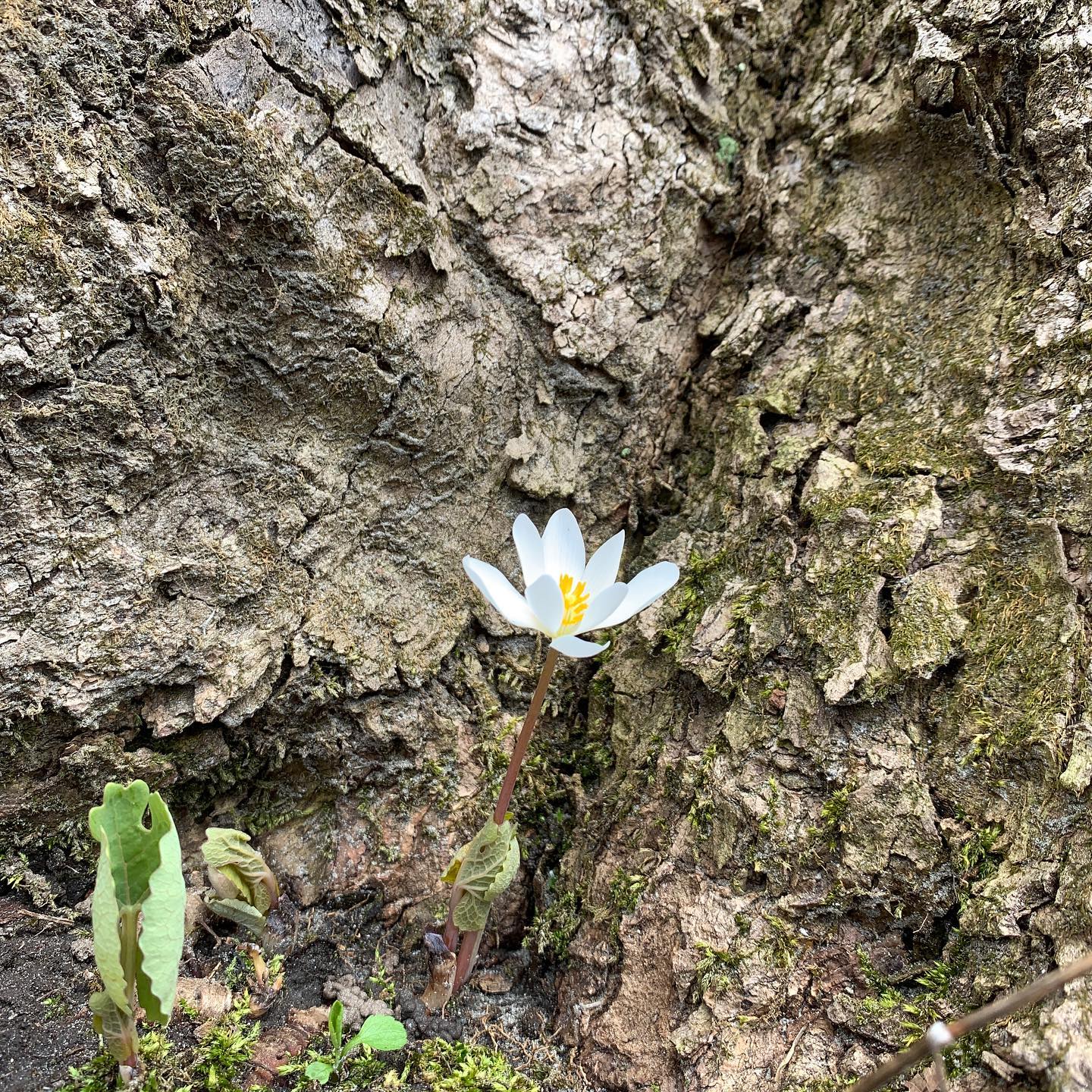 Bloodroot can be found growing in moist to dry, rich wooded soils as well as on floodplains and near the sloping shores of streams. Unlike other spring ephemerals they don’t grow well in open areas, or on disturbed sites. Bloodroots also grow from their rhizomes and branch out in colonies, spreading every year. Bloodroot has a single leaf and flower for each stem and when first emerging the leaf completely enwraps the flower bud. The blossom is white with a golden center and has 8 petals per flower. Bloodroot flowers open during the day and close at night or on cold and overcast days. They are a member of the poppy family and, like most members of that family, bloom for a very short time.
Bloodroot can be found growing in moist to dry, rich wooded soils as well as on floodplains and near the sloping shores of streams. Unlike other spring ephemerals they don’t grow well in open areas, or on disturbed sites. Bloodroots also grow from their rhizomes and branch out in colonies, spreading every year. Bloodroot has a single leaf and flower for each stem and when first emerging the leaf completely enwraps the flower bud. The blossom is white with a golden center and has 8 petals per flower. Bloodroot flowers open during the day and close at night or on cold and overcast days. They are a member of the poppy family and, like most members of that family, bloom for a very short time.
The root yields a red juice (hence the name “Bloodroot”) that was used by Native Americans as a dye for baskets, clothing, and paint. The red juice from the roots of this plant is poisonous.
6. Early Blue Cohosh (Caulophyllum giganteum)
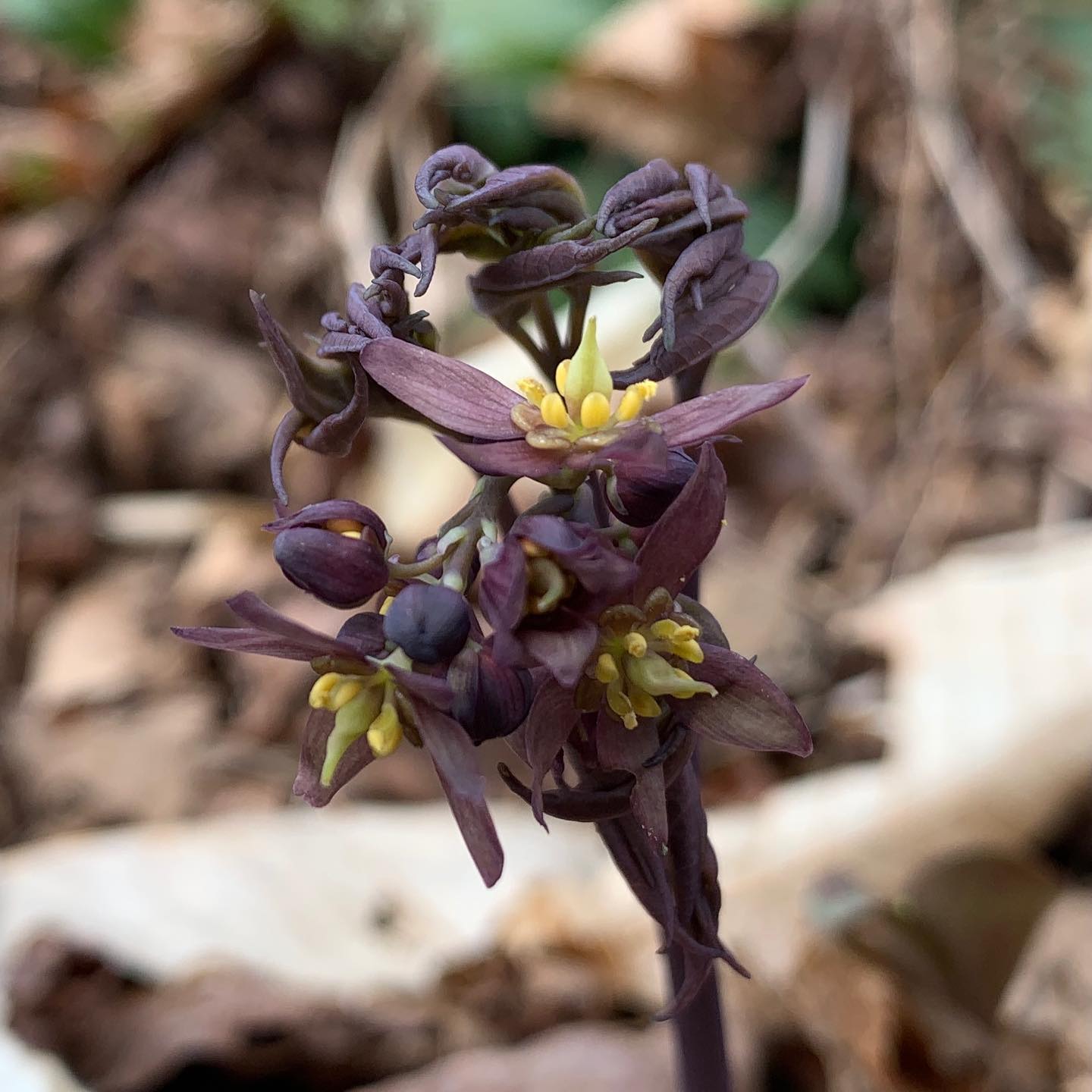
Early Blue Cohosh, a native member of the barberry family, is a perennial wildflower that emerges each spring as a blue tinged, alien looking plant. The plant likes fertile, moist, loamy soils on the forest floor. Early blue cohosh produced four to eighteen purple flowers during the early spring. It blooms 10-15 days earlier than it’s relative, Blue Cohosh, whose flowers are more abundant, and yellow or green

